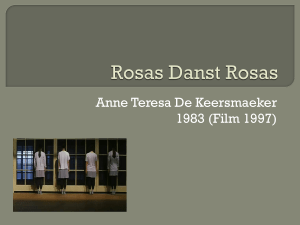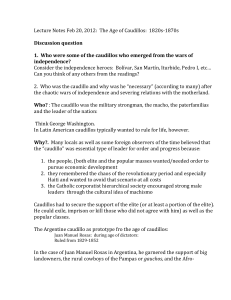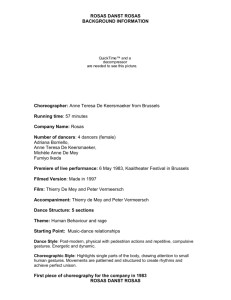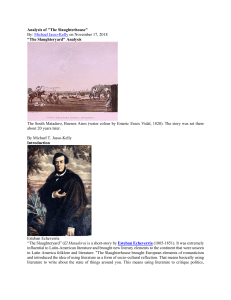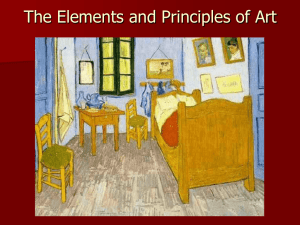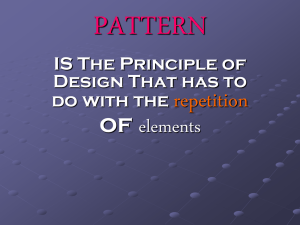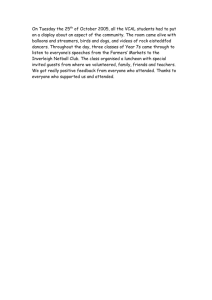Rosas Danst Rosas
advertisement
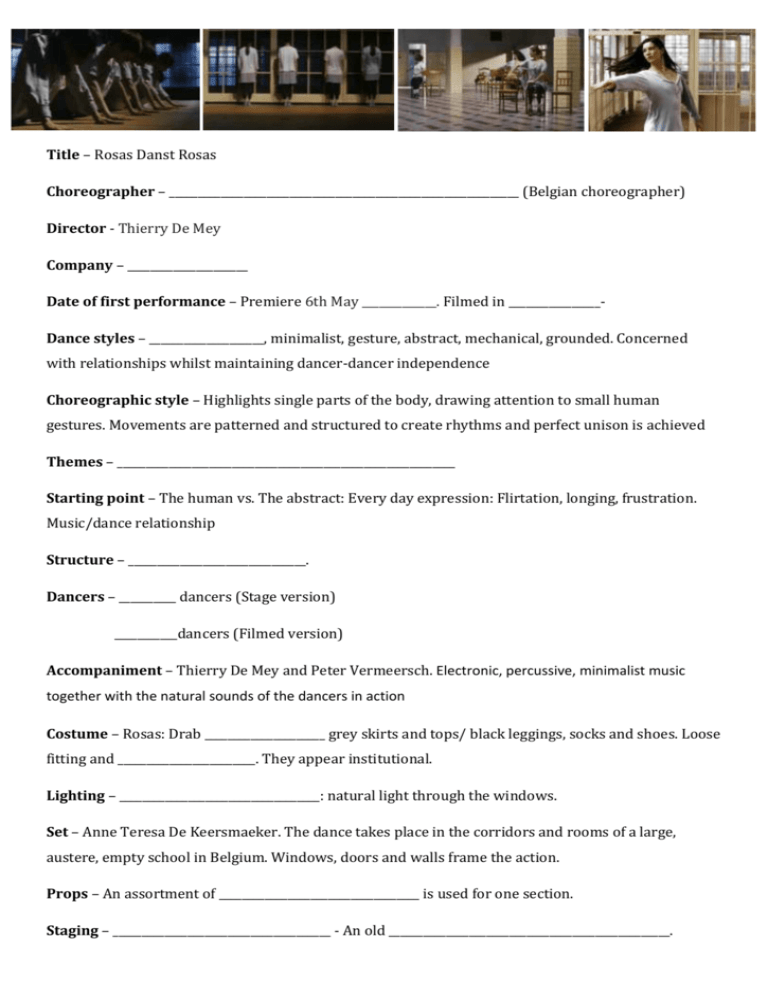
Title – Rosas Danst Rosas Choreographer – _____________________________________________________________ (Belgian choreographer) Director - Thierry De Mey Company – _____________________ Date of first performance – Premiere 6th May _____________. Filmed in ________________Dance styles – ____________________, minimalist, gesture, abstract, mechanical, grounded. Concerned with relationships whilst maintaining dancer-dancer independence Choreographic style – Highlights single parts of the body, drawing attention to small human gestures. Movements are patterned and structured to create rhythms and perfect unison is achieved Themes – ___________________________________________________________ Starting point – The human vs. The abstract: Every day expression: Flirtation, longing, frustration. Music/dance relationship Structure – _______________________________. Dancers – __________ dancers (Stage version) ___________dancers (Filmed version) Accompaniment – Thierry De Mey and Peter Vermeersch. Electronic, percussive, minimalist music together with the natural sounds of the dancers in action Costume – Rosas: Drab _____________________ grey skirts and tops/ black leggings, socks and shoes. Loose fitting and ________________________. They appear institutional. Lighting – ___________________________________: natural light through the windows. Set – Anne Teresa De Keersmaeker. The dance takes place in the corridors and rooms of a large, austere, empty school in Belgium. Windows, doors and walls frame the action. Props – An assortment of ___________________________________ is used for one section. Staging – ______________________________________ - An old _________________________________________________. Rosas Danst Rosas - Anne Teresa De Keersmaeker 1983 (Film 1997) Rosas Danst Rosas is performed in eight different sections. Below is a summary of each of the sections, three of which have been described in some detail. Section 1 – _______________________ Section 2 - ________________ Section 3 - ________________ Section 4 - _________________ Section 5 – ______________________ Section 6 - ________________________ Section 7 – ________________________ Section 8 - __________________ Movement styles Floor – Section 2 This section is all about exploring the floor using _____________________ ________________ with an emphasis on ____________________________________________. Key actions used are ____________________________________________________, always using the _______________________ as a way into and out of the movement. At first, the actions appear repetitive, with the same movements repeated over and over again, but this is not the case. Focus carefully on the _________________________________ and you will see that tiny details change all the time. ____________________________ (taking pieces or ‘fragments’ of movement and putting them together in a different order) is used to great effect towards the end of the section. Chairs – Section 3 The action content can be divided into 4 main motifs and these are __________________________________ throughout this 8 minute section, using a large amount of _____________________________ which together create a complex ______________________. The 4 motifs are introduced first before building in ___________________________________________________ _______________. Motif A: Cross legs. Hand to hair, bring down side of head, over ear, to neck. ___________________ _________ _____________________________________________________ . ‘Knowing’ nod with slight smile. Face front. Motif B: Uncross legs. Throw arms across body to L, L arm holds top of chair, R arm to L hip. ______________________________________________________________________________________________. Rebound to upright, L arm crosses under R, R arm on knee. Motif C: Hands behind head, elbows raised to sides. R hand to breast, flop forwards, punch R arm down. ____________________. Backs of hands pass under chin one after other, drop forwards, replace. Arch, hand to chin & head turn to R, drop palm in lap. Upright, ____________________ ______________________. Motif D: Twist/lunge to L throwing arms and clasping hands in front. Throw clasped hands across body to R, simultaneous ____________________________. Upright, arch, hands between thighs. Glass Interiors – Section 5 This section follows ____________________ from ‘Building’ as a continuation. It is primarily focused on ________________________, making good use of fragmentation which creates a ________ effect as well as ________________, ___________________ and grouping different sets of _________________ together. The result is a section where dancers _______________________ and ______________ of these ______________________ fluidly and it can be hard to spot where the change has happened. The movement often matches the ___________________ and _________________________ of the music.
